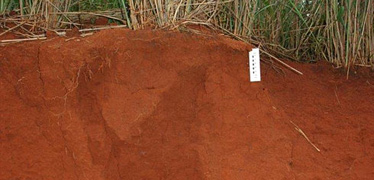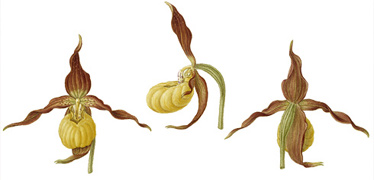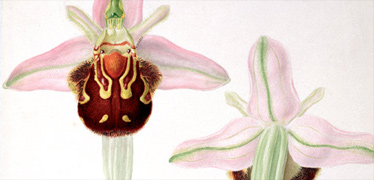This micro-CT video shows the internal structure of a soil with associated cryptogamic (moss, lichen) ground cover. Non-destructive imaging techniques like micro-CT allow us to categorise and document the internal structure and components of these micro-soils.
Principal Investigator
Project summary
- Focus: Characterising and analysing modern soils, and comparing them with ancient soils.
- Funding: internal
We are comparing 400-million-year-old fossil soils and modern analogues to learn more about the early evolution of life on land.
Interpreting early soils requires a better understanding of modern analogues, particularly soils associated with lichens, moss, liverwort and lycopod plant communities.
By characterising and analysing modern soils we can:
- recognise primitive soils in the geological record
- determine their impact on major geochemical cycles
- understand how the first soils co-evolved with biological components such as fungi and plants
Results
Our study of recent soils informs the wider understanding of fossil soils and their environments.

Lycopods growing on some geothermal substrates near to a hot spring in New Zealand, an example of primitive plants colonizing extreme environments.
Our research supports the theory that early soils were:
- formed of communities of cyanobacteria, fungi, lichens, small rootless plants
- mostly thin (millimetre and centimetre scale)
- inhabited by diverse but minute arthropods
- already host to sophisticated symbioses among fungi, cyanobacteria, algae and plants
We are also studying specimens of 400-million-year-old Rhynie chert held in the Museum collections. These exceptionally well-preserved sediments from Scotland record associations between a diverse range of organisms.
Museum Staff
Related links
Origins, evolution and futures
This project is part of the Museum's origins, evolution and futures initiative.

Origins, evolution and futures
We study the Earth's origins, environment and the evolution of life

Invertebrate and plant palaeobiology research
We are investigating the origins and evolution of these diverse fossil groups

Palaeobotany collections
The palaeobotany collection spans the Archean to the present, containing cyanobacteria, fungi and plants


